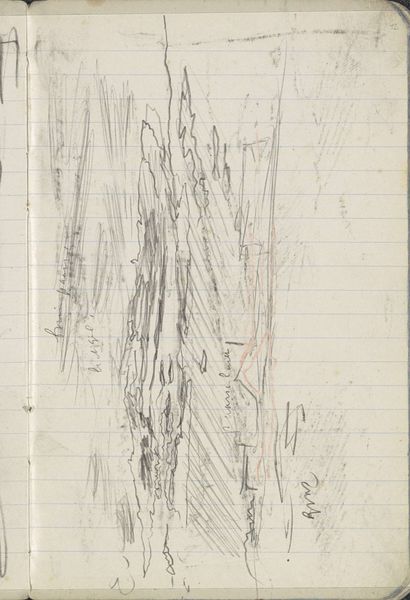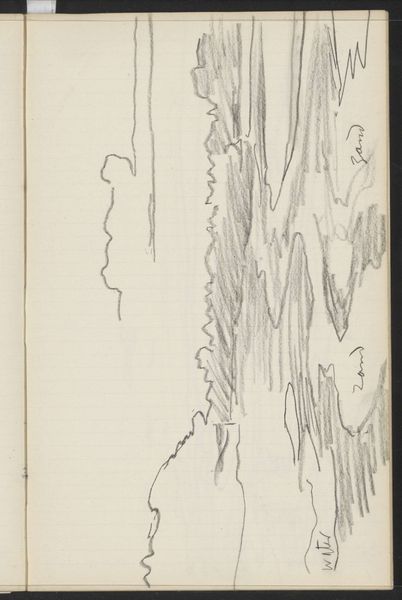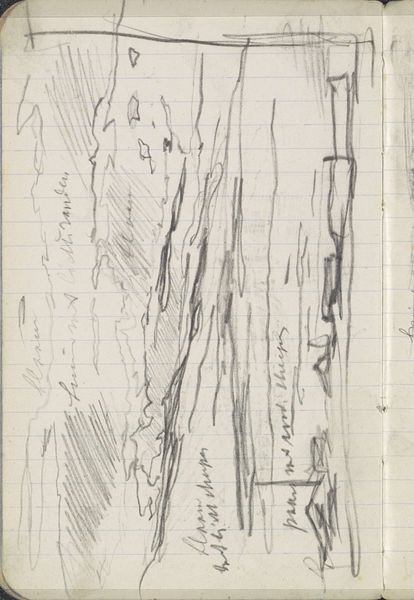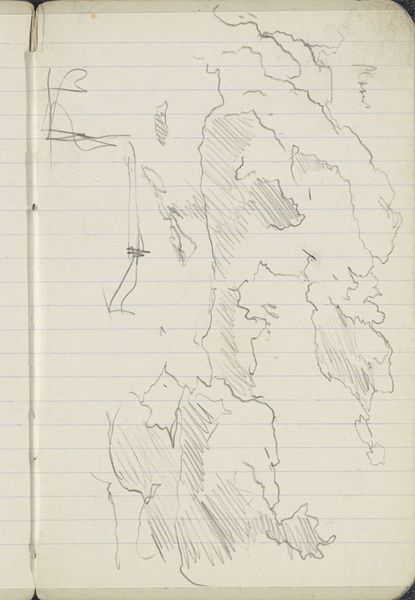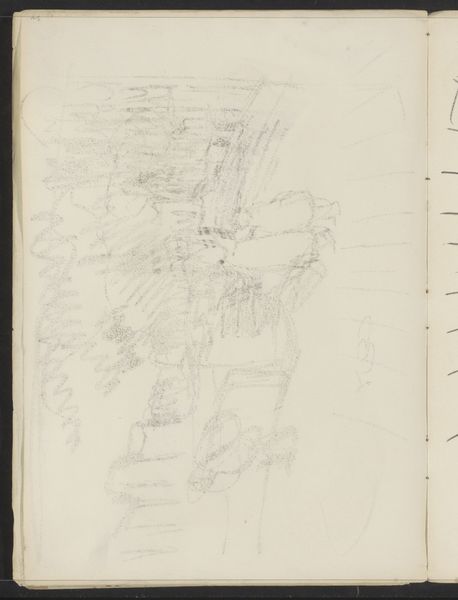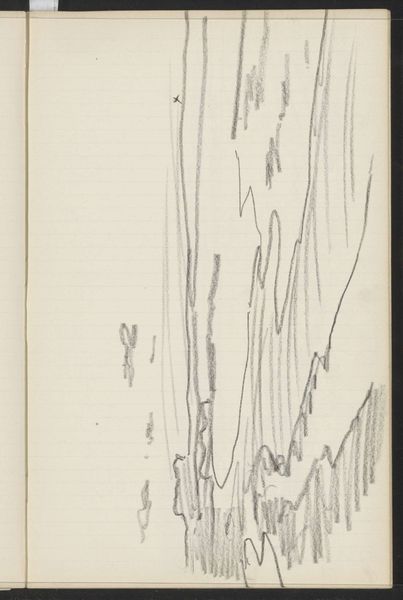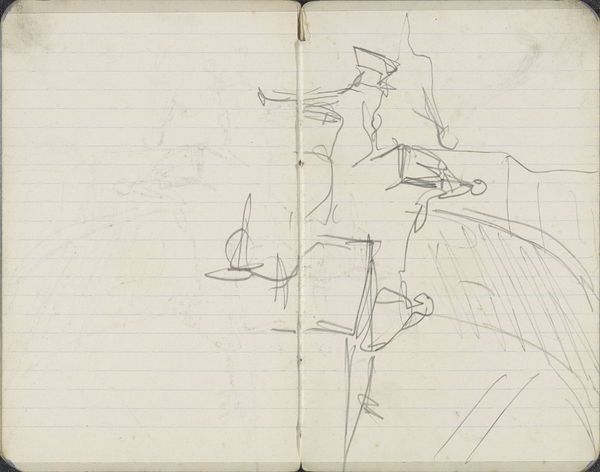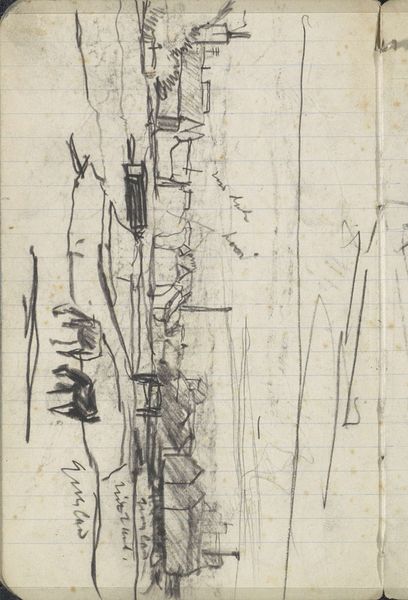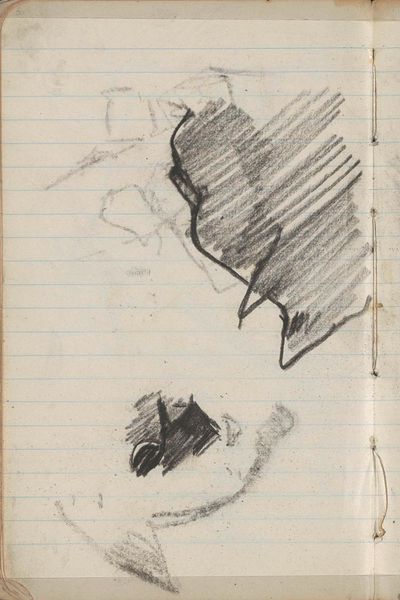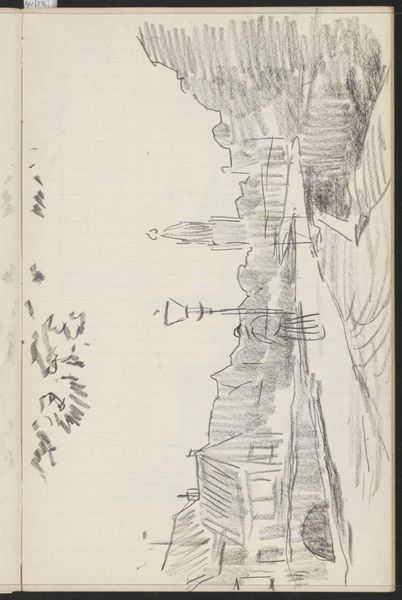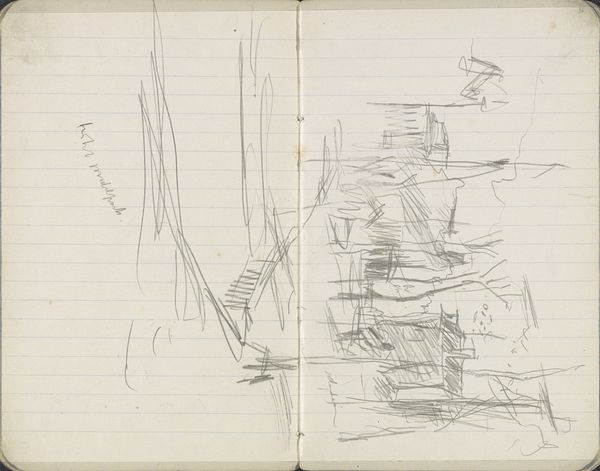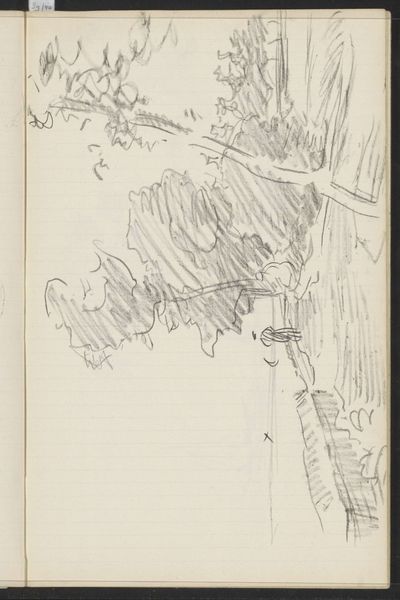
Copyright: Rijks Museum: Open Domain
Curator: So, here we have George Hendrik Breitner's "Landschap met wolkenlucht," a pencil and ink drawing from around 1896-1897, held at the Rijksmuseum. What's your first impression? Editor: Sparse, spectral, incomplete. Like a memory fading, a dream just out of reach. Is that a landscape, or just the ghost of one? It feels… fragile. Curator: Indeed. Breitner, known for his Amsterdam cityscapes, often used sketches like this as groundwork for his larger paintings. This piece is quite interesting because it shows his process so intimately, more like a visual diary than a finished work. It is intriguing that he left many sketches on sketchbook paper, even if it makes them fragile from an archiving perspective. Editor: Visual diary - I like that. I’m also really struck by the lined paper. There’s something inherently constrained about those lines. It makes the expansive subject feel confined, almost claustrophobic despite being an open landscape. Curator: That's a very interesting point. The presence of those lines speaks to the formal academic structures that artists like Breitner were pushing against at the time. While this work embraces certain impressionist ideals, it's presented through the very lens of order the artist aimed to evade. It also might just be a humble material - paper he found in a workshop to record an idea. Editor: Maybe it is both - rebellion in miniature. Breitner tries to liberate it, but those lines hold fast. Looking at it that way, it seems less an attempt at pure beauty, more like a… commentary on our endless attempt to make sense of the world with these frail tools, a pencil and some lines. The sky, wild as it is, crammed onto some old notepad. Curator: Absolutely. And it underscores Breitner's position in the Dutch art scene. He captured the transient, urban experience but always wrestled with the traditions that preceded him. You can feel it here, can’t you? A struggle between capturing fleeting atmospheric effects and the rigid conventions of landscape art. It mirrors that exciting time, too, in Dutch politics. Editor: It does! It also makes me feel slightly better about all my sketchbooks full of half-finished, chaotic scribblings. Maybe there's something to be said for the beautiful mess after all. Curator: Exactly, and the beautiful mess gives us glimpses into the intellectual, artistic climate of the period in such an intimate and affecting way. Thanks for pointing this out; it has brought a very intimate moment to a broader historical scope.
Comments
No comments
Be the first to comment and join the conversation on the ultimate creative platform.
